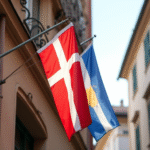Introduction
Several years ago, I had the honor of presiding the National College of Economists alongside esteemed colleagues, and we decided to champion Financial Education, believing it was one of the solutions for many inequalities our country faces. While acknowledging that Mexico’s financial system has progressed in expanding products and services, growing the Fintech ecosystem, digitalization, and inclusion in historically neglected regions, we must address the issue of financial literacy.
The Current State of Financial Literacy in Mexico
According to the latest National Inclusion Finance Survey (ENIF), only 35% of Mexicans maintain a personal budget, and over 60% do not compare financial institutions before contracting a product. Financial competencies have stagnated since 2018, leaving millions of Mexicans unaware of basic functions like saving, credit, and compound interest. This vulnerability makes them susceptible to over-indebtedness, fraud, or impulsive decisions, hindering the financial system’s true purpose: serving as a development tool.
Global Perspective on Financial Literacy
The Organisation for Economic Co-operation and Development (OECD) recognizes financial literacy as a vital skill in the 21st century, crucial for individual empowerment and societal well-being. The latest study shows that, on average, 67% of the adult population has minimal financial knowledge. In Mexico, this figure stands at 59%, indicating insufficient understanding of basic financial concepts to make informed decisions, especially amidst rising living costs. Hong Kong (91%), China (85%), and Estonia (78%) lead in financial literacy, while Mexico lags behind.
Initiatives and Progress
Successful initiatives in other countries include integrating financial education transversally into the curriculum from primary school. The Mexican Council for Financial Inclusion, under the National Institute of Statistics and Geography (INEGI), developed “The Graduate Profile in Economic-Financial Education” for basic, secondary, and higher education. The National Museum of Migration is led by a remarkable friend of mine, Silvia Singer. They also created an e-learning platform for basic education, which should be incorporated into current educational plans if not already done so. Additionally, the National Commission for Provision of Financial Services (Condusef) updated the Registry of Financial Entities to include minimum standards for developing and implementing financial education programs.
UNIFIMEX’s Role
At UNIFIMEX, we are committed to furthering this crucial task and acting as a reliable bridge between regulatory and educational authorities and Mexican financial institutions. Our goal is to make structured, evaluable financial education a strategic pillar of civic formation.
Key Questions and Answers
- What is the current state of financial literacy in Mexico? Only 59% of adults have minimal financial knowledge, making it difficult for them to make informed decisions.
- What initiatives have been successful in other countries? Integrating financial education into the curriculum from primary school and creating e-learning platforms have proven effective.
- What is UNIFIMEX’s role in promoting financial education? UNIFIMEX aims to make structured, evaluable financial education a strategic pillar of civic formation by bridging the gap between authorities and financial institutions.






